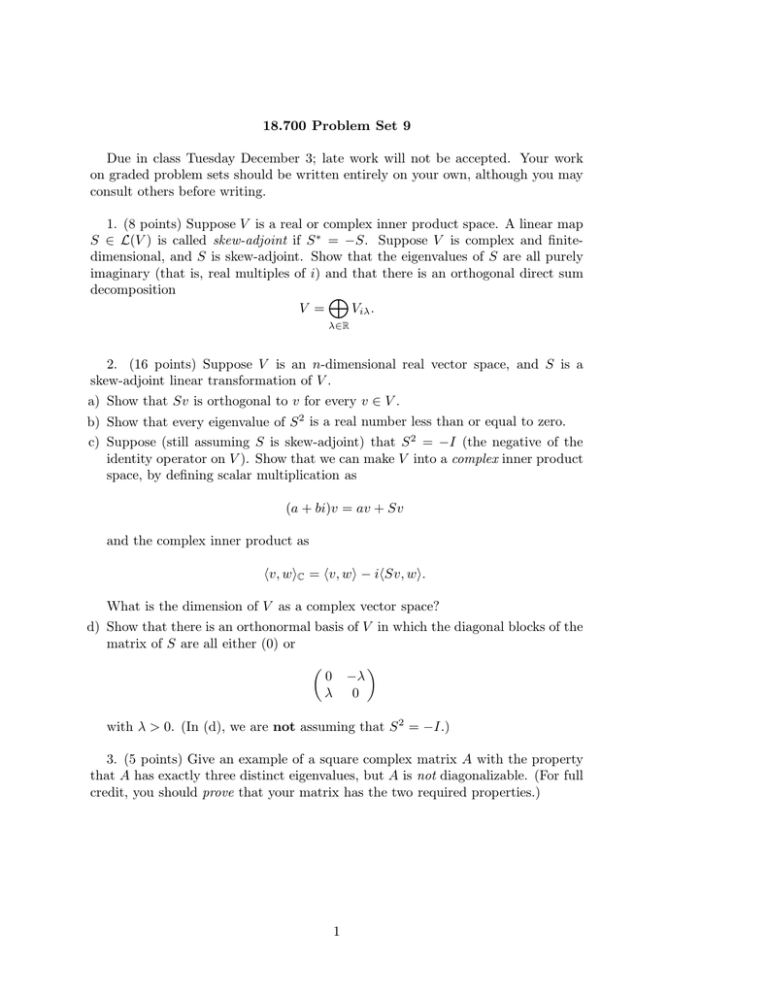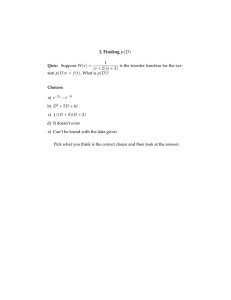18.700 Problem Set 9
advertisement

18.700 Problem Set 9 Due in class Tuesday December 3; late work will not be accepted. Your work on graded problem sets should be written entirely on your own, although you may consult others before writing. 1. (8 points) Suppose V is a real or complex inner product space. A linear map S ∈ L(V ) is called skew-adjoint if S ∗ = −S. Suppose V is complex and finitedimensional, and S is skew-adjoint. Show that the eigenvalues of S are all purely imaginary (that is, real multiples of i) and that there is an orthogonal direct sum decomposition V = Viλ . λ∈R 2. (16 points) Suppose V is an n-dimensional real vector space, and S is a skew-adjoint linear transformation of V . a) Show that Sv is orthogonal to v for every v ∈ V . b) Show that every eigenvalue of S 2 is a real number less than or equal to zero. c) Suppose (still assuming S is skew-adjoint) that S 2 = −I (the negative of the identity operator on V ). Show that we can make V into a complex inner product space, by defining scalar multiplication as (a + bi)v = av + Sv and the complex inner product as (v, w)C = (v, w) − i(Sv, w). What is the dimension of V as a complex vector space? d) Show that there is an orthonormal basis of V in which the diagonal blocks of the matrix of S are all either (0) or � 0 λ −λ 0 � with λ > 0. (In (d), we are not assuming that S 2 = −I.) 3. (5 points) Give an example of a square complex matrix A with the property that A has exactly three distinct eigenvalues, but A is not diagonalizable. (For full credit, you should prove that your matrix has the two required properties.) 1 MIT OpenCourseWare http://ocw.mit.edu 18.700 Linear Algebra Fall 2013 For information about citing these materials or our Terms of Use, visit: http://ocw.mit.edu/terms.



